







Winter 2023 BETTER WOMEN’S HEALTH AT EVERY AGE MEDICAL CENTER healthytogether KEEP YOUR BONES HEALTHY SONIC WAVES TO REMOVE ARTERIAL PLAQUE COPING WITH SEASONAL AFFECTIVE DISORDER
“As we enter into 2023 with a renewed sense of purpose, accomplishment and optimism, it’s a great time to focus on getting and staying healthy by making preventive care a priority. And, we’re making it easier for you to do all of these things at RWJBarnabas Health. We’ve welcomed even more nationally recognized clinicians; expanded telehealth; built ambulatory and satellite facilities so that our patients can receive healthcare closer to home; and we continue to improve, expand and modernize our facilities with state-of-the-art equipment and technology. We wish you the best of health in the New Year.”
MARK E. MANIGAN PRESIDENT AND CHIEF EXECUTIVE OFFICER, RWJBARNABAS HEALTH
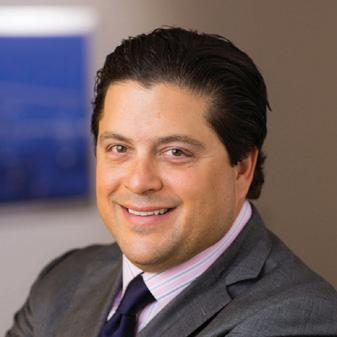
“Taking the time to focus on one’s health and wellness is a great way to start the New Year. Clara Maass Medical Center provides our patients and the communities we serve with the highest quality care for all of their medical needs. Our specialty care programs in labor and delivery and obstetrics and gynecology, bariatric surgery, heart failure, COPD and kidney failure have been nationally recognized by U.S. News & World Report and Healthgrades and we have received a high four-star rating from the Centers for Medicare & Medicaid Services based on a variety of measures across five areas of quality. These accomplishments attest to our high standards of healthcare delivery.”
MARY ELLEN CLYNE, PHD PRESIDENT AND CHIEF EXECUTIVE OFFICER, CLARA MAASS MEDICAL CENTER

1 Clara Maass Drive, Belleville, NJ 07109 | 973.450.2000 | www.rwjbh.org/claramaass
Clara Maass Medical Center complies with applicable federal civil rights laws and does not discriminate on the basis of race, color, national origin, age, disability or sex. For more information, see link on our home page at www.rwjbh.org/claramaass. Clara Maass Medical Center cumple con las leyes federales de derechos civiles aplicables y no discrimina por motivos de raza, color, nacionalidad, edad, discapacidad o sexo. ATENCIÓN: Si usted habla español, servicios de asistencia lingüística, de forma gratuita, están disponibles para usted. Llame al 973.450.2000. Clara Maass Medical Center konfòm ak lwa sou dwa sivil federal ki aplikab yo e li pa fè diskriminasyon sou baz ras, koulè, peyi orijin, laj, enfimite oswa sèks. ATANSYON: Si w pale Kreyòl Ayisyen, gen sèvis èd pou lang ki disponib gratis pou ou. Rele 973.450.2000.
For issues regarding delivery of Healthy Together, please write to HTcirculation@wainscotmedia.com.
FIVE-STAR RATINGS FOR CLARA MAASS
For the seventh consecutive year, Clara Maass Medical Center (CMMC) has received the highest 5-star ratings and Excellence Awards for Obstetrics and Gynecology and Labor and Delivery from Healthgrades, a leading provider of healthcare information.
The Excellence Awards and 5-star ratings indicate that CMMC’s clinical outcomes for natural childbirth, C-section deliveries, gynecologic surgery and hysterectomy are in the top 10 percent of U.S. hospitals that were evaluated by Healthgrades.
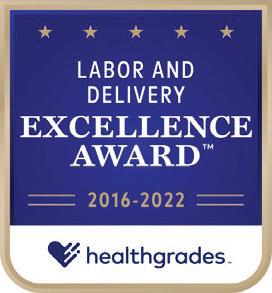

According to Healthgrades, patients treated in a hospital that received the Labor and Delivery Excellence Award had a 41.2 percent lower risk of experiencing a complication while in the hospital than if they had been treated in a hospital that did not receive this award. Patients treated in a hospital that received the Obstetrics and Gynecology Excellence Award had a 35 percent lower risk of experiencing a complication while in the hospital than if they had been treated in a hospital that did not receive this award.
CMMC’S
BREAST HEALTH PROGRAM
RECEIVES PRESTIGIOUS NATIONAL ACCREDITATION
The Center for Breast Health and Disease Management at Clara Maass Medical Center (CMMC) has received a Certificate of Accreditation from the National Accreditation Program for Breast Centers (NAPBC), a Quality Program of the American College of Surgeons Quality Portal and a hallmark of excellence.
To achieve NAPBC accreditation, the Center for Breast Health and Disease Management at Clara Maass demonstrated compliance with rigorous NAPBC standards that addressed its leadership, clinical services, research, community outreach, professional education and quality improvement for patients.
Breast centers seeking NAPBC accreditation undergo a site visit every three years.

Patients receiving care at the Center for Breast Health and Disease Management at Clara Maass have access to information on the latest clinical trials and new treatment options, genetic counseling and patient-centered services, including psychosocial support, rehabilitation services and survivorship care.
CMMC, part RWJBarnabas Health, is aligned with Rutgers Cancer Institute of New Jersey, the state’s only National Cancer Institute-Designated Comprehensive Cancer Center.
MESSAGES FROM LEADERSHIP
NEWS
NEWS
HEALTH
HEALTH
CONNECT WITH US ON @ClaraMaassMedicalCenter @Clara_Maass RWJBarnabas Health Clara Maass Medical Center clara_maass.medicalcenter Healthy Together | 2 | Winter 2023
AND TENNIS FOR A WORTHY CAUSE. Proceeds support Clara Maass patient services and healthcare heroes.

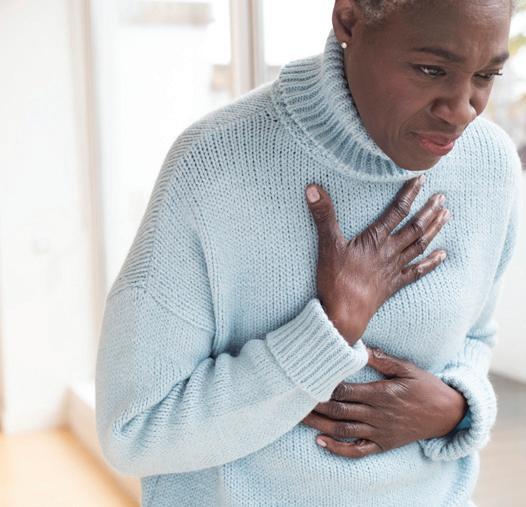





20 22 contents WINTER 2023 healthytogether 23 6 17 4 4.
6.
8.
17.
18.
20.
22.
23.
11.
12. BETTER
14.
15.
16.
12 9.
10.
Clara Maass Medical Center | RWJBH.ORG/CLARAMAASS 3
‘WAVE’ OF THE FUTURE. A new device uses sonic pressure to destroy plaque buildup in arteries.
PERSONALIZING BREAST CANCER TREATMENT. Treatment options based on tumor type.
GOLF
HEALTHY BONES. How to get them, how to keep them.
SEASONAL AFFECTIVE DISORDER. Winter blues—or something more?
WHY YOU SHOULD HAVE A BIRTH PLAN. You’ll feel calmer as your due date draws near.
SPINAL SURGERY GOES HIGH-TECH. O-arm surgical imaging at Clara Maass.
HEALTHY GAME-DAY WINGS. Go beyond chips and dip on Super Bowl Sunday.
HEMATOLOGY DREAM TEAM. Meet the world-class team of doctors treating blood disorders and cancers.
WOMEN’S HEALTH AT EVERY AGE. From adolescents to seniors: what every woman needs to know.
SPECIALTY OUTPATIENT CARE FOR KIDS. Children’s Specialized Hospital offers a range of services at 14 locations.
BEYOND BED-WETTING. Treating urologic conditions in children.
BANKING ON LIFE. How, where and when to donate blood this winter.
PREVENTING SUICIDE What you say and do may help save a life.
CARDIO VS. STRENGTH TRAINING. Which is better for heart health? Resolving an old debate.
“WAVE”
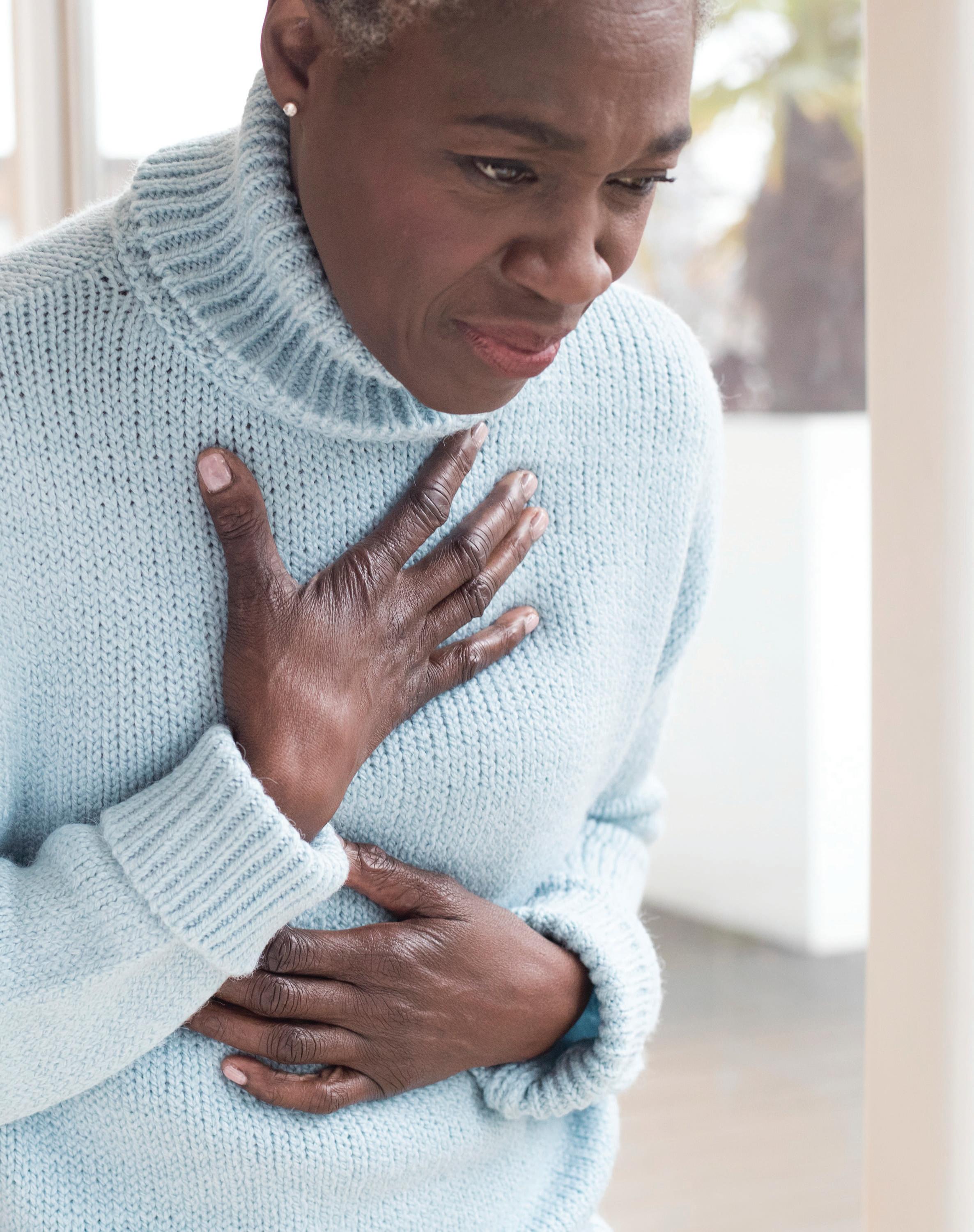
OF THE FUTURE
Healthy Together 4 | Winter 2023
A NEW DEVICE USES SONIC PRESSURE TO BREAK UP HARDTO-REMOVE PLAQUE.
The coronary stent—a tiny but powerful thin mesh tube that props open blocked heart arteries—was first used in 1986 and has since transformed care for coronary artery disease (CAD). Today, more than 600,000 coronary stents are implanted through catheters each year in the U.S., helping to restore blood flow to patients’ hearts without open heart surgery.
Now, a newly approved technology, available locally at Clara Maass Medical Center (CMMC), could make stents even more effective for people with the most severe and potentially life-threatening coronary artery blockages.
The device, called the Shockwave C2 Coronary Intravascular Lithotripsy Catheter, uses sonic waves to destroy heavy buildups of hard, calcified plaque within the arteries. “This allows us to open stents fully within an artery, regardless of the amount of plaque buildup within that artery,” says interventional cardiologist Elie Chakhtoura, MD, Director of the Cardiac Catheterization Laboratory at CMMC and a member of RWJBarnabas Health Medical Group.
Shockwave received U.S. Food and Drug Administration (FDA) approval for use in coronary arteries in February 2022. Dr. Chakhtoura began using it in heart patients in early fall and has treated more than a half-dozen patients successfully at CMMC thus far. “It’s an excellent way to remove hardened calcium from a coronary artery and improve stent expansion,” he says.
ALL BLOCKED ARTERIES ARE NOT ALIKE
Symptoms such as chest pain, shortness of breath and nausea are telltale signs of CAD. But the only way to know the full severity of a person’s blocked coronary arteries is to perform a procedure called coronary angiography.
During coronary angiography, doctors in a cardiac catheterization lab thread a catheter into the wrist or groin and up into the coronary
arteries, where they inject dye and acquire images. If a blocked artery is identified, percutaneous coronary intervention (PCI), or balloon angioplasty, is performed. Doctors inflate a balloon to open the blockage, then insert a stent to hold the artery open.
But doctors performing a PCI find that if an artery has a severe calcified buildup of plaque, which is seen in an estimated 18 to 26 percent of PCI cases nationwide, a stent can’t fully open.
“When that happens, it can lead to several potential problems,” Dr. Chakhtoura explains. “For one, a patient will not get the benefits of a wideopen vessel. For another, drug-eluting stents- that slowly release medication to reduce the risk for repeat artery blockages face an additional problem. If a drug-eluting stent is under-deployed, the delivery of the medication to vessel wall is severely compromised leading to a higher possibility of re-occlusion. This also increases the risk of stent thrombosis, which happens when blood clots form in a stent.” Patients with severely calcified arteries who receive drug-eluting stents— those that slowly release medication to reduce the risk for repeat artery blockages—face an additional problem.

“If a drug-eluting stent is under-deployed, there’s a chance that the medication will separate from the stent because the stent is rubbing against a calcified artery wall,” says Dr. Chakhtoura.
HOW SHOCKWAVE THERAPY HELPS
Shockwave provides a new and potentially more effective option for people with severely calcified coronary arteries. It delivers the same type of sonic wave therapy—called lithotripsy—that doctors have used to break up hardened kidney stones since the 1980s.
The Shockwave device includes a generator and catheter and looks similar to a small household pressure washer. The catheter resembles those used during traditional balloon angioplasty, with one
major difference: The tip of the catheter, located within the balloon, includes several tiny transducers.
Once the Shockwave catheter is threaded into the artery during PCI, Dr. Chakhtoura inflates the balloon. He then uses the generator to deliver a therapy called intravascular lithotripsy (IVL).
“The IVL generator sends pulses of sonic waves up through the catheter and into the transducers,” Dr. Chakhtoura says. “The waves then break down the calcium inside an artery into tiny particulate material, making the vessel more expandable and allowing full deployment of a stent.”
The procedure carries a low risk of complications such as serious bleeding or blood vessel damage. Most patients who receive Shockwave treatment at CMMC will return home from the hospital the same day.
EARLY SUCCESS FOR OTHER APPLICATIONS
Prior to receiving approval to treat blocked coronary arteries, Shockwave therapy was approved to help remove blockages located within the arteries of the legs and pelvis. Dr. Chakhtoura used the device initially during transcatheter aortic valve replacement (TAVR) procedures at CMMC’s sister hospital, Cooperman Barnabas Medical Center.
“When doing a TAVR procedure, if you encounter a severely calcified femoral artery in the pelvis, you can’t advance the device up and into the heart,” says Dr. Chakhtoura. “We began using Shockwave to clear those femoral vessels and found it to be extremely effective.”
Now that Shockwave is approved for CAD treatment, Dr. Chakhtoura says he expects to do several PCI procedures with the device each month. He’s already seen the benefits in the patients with severe calcification that he’s treated with IVL. “Shockwave gives us another tool we can use to take care of people’s hearts here in our community, using the latest and safest minimally invasive approaches available,” he says.
ELIE CHAKHTOURA, MD
Whoever your heart beats for, our hearts beat for you. To connect to a top cardiovascular expert at Clara Maass Medical Center, call 888.724.7123 or visit www.rwjbh.org/heart.
Clara Maass Medical Center | RWJBH.ORG/CLARAMAASS 5
RWJBarnabas Health and Clara Maass Medical Center, together with Rutgers Cancer Institute of New Jersey—the state’s only NCI-Designated Comprehensive Cancer Center—provide close-to-home access to the latest treatment options. To learn more, call 844.CANCERNJ or visit www.rwjbh.org/beatcancer.
PERSONALIZING BREAST CANCER TREATMENT
CLARA MAASS MEDICAL CENTER OFFERS TREATMENT OPTIONS BASED ON TUMOR TYPE.
For a disease as personal as breast cancer, it’s fitting that, now more than ever before, treatments can be personalized. “We want to provide patients with options,” says Maria J. Kowzun, MD, FACS, Director of the Center for Breast Health and Disease Management at Clara Maass Medical Center (CMMC), accredited by the National Accreditation Program for Breast
Centers, a Quality Program of the American College of Surgeons.
With the help and support of Physician Assistant Daniela Villaman, PA-C, and Nurse Navigator Michelle Ashley, MSN, RN, Dr. Kowzun treats each patient according to their specific needs.
CANCER CELLS CAN BE TESTED Tumors can be analyzed with the latest advanced tests, and knowing the biology of a malignancy can guide therapy decisions. Oncotype DX tests are called “genomics’’ because they study how a set of genes behaves, including how

likely tumors will grow and spread. Those insights help determine whether a patient needs aggressive chemotherapy, radiation, surgery or targeted drugs—or if fewer steps can save their life and thwart the return of the cancer.
CLINICAL TRIALS OFFER MORE OPTIONS
Dr. Kowzun says the ongoing I-SPY2 trial for high-risk early-stage breast cancer is groundbreaking and has opened avenues for new treatments and treatment combinations for some of her patients. The trial, which is currently recruiting new patients, is available at
 MARIA J. KOWZUN, MD, FACS
MARIA J. KOWZUN, MD, FACS
Healthy Together 6 | Winter 2023
CUSTOMIZED PATIENT CARE
Two relatively new additions to Dr. Kowzun’s team—Nurse Navigator Michelle Ashley, MSN, RN, and Physician Assistant Daniela Villaman, PA-C—are helping to make the experience of patients with breast cancer a little easier. “They have strong empathetic skills and help patients understand complex information while dispelling myths,” says Maria J. Kowzun, MD, FACS, Director of the Center for Breast Health and Disease Management. Here, Ashley and Villaman talk about their new roles.
How do you help patients?
NURSE NAVIGATOR MICHELLE ASHLEY: I troubleshoot, helping patients overcome barriers from diagnosis to post-treatment survivorship or end-of-life care.
PHYSICIAN ASSISTANT DANIELA VILLAMAN: I provide medical care, do breast exams and, as a native Spanish speaker, translate for patients who are not fluent in English. I can answer questions about treatment and help them reach specialists and avoid delays.
What does your role entail day-to-day?
MA: I take notes at doctors’ appointments and follow up to see if patients understand instructions. As I see it, I work for the patient. I serve as their advocate in their cancer journey and connect them to resources. They have my cell number—and I can call doctors and other healthcare providers.
DV: I see patients in the office and at the hospital for benign breast conditions. I order imaging and medications. I also refer patients to physical therapy, plastic surgery, radiation and chemotherapy, and I help Dr. Kowzun with breast cancer surgeries.
How do you make cancer journeys easier?
MA: It can be overwhelming when patients learn they have cancer. I’m there to comfort them and their families. We go over the treatment process and review goals.
DV: I help them emotionally. For patients who only speak Spanish, I eliminate a whole level of anxiety about understanding what doctors say.
What motivates you?
MA: I’m inspired seeing women transform as they find strength within. I develop deep relationships and keep in touch long after care ends. Some patients message me years later. That’s so rewarding.
DV: I work with experts in radiation, medical oncology, genetics and plastic surgery who strive to provide the best outcomes for our patients. That’s truly inspiring.
Rutgers Cancer Institute of New Jersey in New Brunswick and Cooperman Barnabas Medical Center in Livingston. Repeat scans and biopsies monitor a patient’s response. “If she’s doing well, that’s great. If not, she can be offered something potentially better and be transferred to a different arm of the clinical trial,” says Dr. Kowzun.
This research may change the types of treatment given and the order in which it is rendered. “In the past, we’d normally recommend chemotherapy, with its associated toxicity, before surgery for locally advanced breast cancer,” she says. “The ongoing trial offers more options, including oral alternatives to traditional
DETERMINING GENETIC RISKS

If you’ve been diagnosed with breast cancer, your risk of other cancers may be higher.
Genetic testing that can help predict personal lifetime risk of breast cancer is significantly more advanced than it was just a decade ago, according to Dr. Kowzun. For instance, a Myriad Genetics panel can study 48 genes linked to 11 different cancers, including breast and ovarian cancer. The panel and other such tests can also reveal gene flaws that can spur other cancers with high incidence rates, including lung, colorectal and pancreatic cancers.
Spotting genetic defects helps oncologists choose preventive therapies, such as tamoxifen or raloxifene for BRCA1 and BRCA2 mutations.
If you have not been diagnosed with breast cancer but are concerned about a family pattern or history of the disease, Dr. Kowzun suggests seeing a genetic counselor who can order the tests you that are appropriate for you and your specific needs.
chemotherapy.” Also, in cases where a mastectomy once would have been the only surgical option, lumpectomies with oncoplastic tissue rearrangement with plastic surgery are now possible. CMMC’s Center for Breast Health and Disease Management also helps patients enroll in other trials tailored to their particular type and stage of cancer.
To schedule an appointment at the Center for Breast Health and Disease Management at Clara Maass Medical Center, call 844.CANCERNJ or visit www.rwjbh.org/beatcancer
Clara Maass Medical Center | RWJBH.ORG/CLARAMAASS 7
GOLF AND TENNIS FOR A VERY WORTHY CAUSE
The crisp autumn air and vibrant foliage were a scenic backdrop for the 7th annual Clara Maass Medical Center Golf Invitational & Inaugural Tennis Open, which took place on October 17 at the Montclair Golf Club in West Orange, NJ.

Robert V. Gamba, CEO of Prismatic Development Corporation and Chairman of the Clara Maass Medical Center Foundation Board of Trustees, served as Chairman of the event, which kicked off at 8 a.m. with a breakfast for the Tennis Open participants, who competed on the six tennis courts at the Montclair Golf Club Racquet Sports Complex from 9 a.m. until noon. Participants in the Golf Invitational began arriving at 10 a.m., then enjoyed brunch before a shotgun start at 12:30 p.m.
The event concluded with an awards dinner and special sports panel at 6 p.m. New York Giants Super Bowl Champions Bart Oates and Shaun O’Hara hosted the panel, which was a highlight in a day full of highlights. In addition to Super Bowl stories, topics of the panel’s discussion included the Giants’ successful start to the 2022 NFL season.
The Inaugural Tennis Open proved to be an extremely popular addition, and the charitable event raised $248,000, with proceeds supporting patient services and healthcare heroes at Clara Maass Medical Center.


MIDDLE:
BOTTOM: (L to R) Mary Ellen Clyne, PhD, President and Chief Executive Officer, Clara Maass Medical Center; Brian Sterling, Clara Maass Medical Center Hospital and Foundation Board member; Eli Manning and Robert V. Gamba
 TOP: Golfers at the 7th annual Clara Maass Medical Center Golf Invitational & Inaugural Tennis Open included Robert V. Gamba, Event Chairman and Chairman of the Clara Maass Medical Center Foundation Board (third from left) and George Filosa, Peter Falzo and Frank Rizzo.
Former NY Giants Super Bowl Champions Bart Oates and Shaun O’Hara hosted a sports panel at the event.
at the Clara Maass Medical Center Golf Invitational & Inaugural Tennis Open.
TOP: Golfers at the 7th annual Clara Maass Medical Center Golf Invitational & Inaugural Tennis Open included Robert V. Gamba, Event Chairman and Chairman of the Clara Maass Medical Center Foundation Board (third from left) and George Filosa, Peter Falzo and Frank Rizzo.
Former NY Giants Super Bowl Champions Bart Oates and Shaun O’Hara hosted a sports panel at the event.
at the Clara Maass Medical Center Golf Invitational & Inaugural Tennis Open.
For information on upcoming events or to donate to Clara Maass Medical Center, call 973.450.2277 or visit www.rwjbh.org/clara-maass-medical-center/giving .
THE CLARA MAASS MEDICAL CENTER GOLF INVITATIONAL & INAUGURAL TENNIS OPEN RAISED $248,000.
Healthy Together 8 | Winter 2023
Eli Manning poses with the tennis participants at the Inaugural Clara Maass Medical Center Tennis Open at Montclair Golf Club.
SUICIDE WARNING SIGNS
Contact the RWJBarnabas Health Behavioral Health Access Center at 800.300.0628 for information about services or a referral to a mental health specialist.
HELP AND HOPE FOR THOSE AT RISK FOR SUICIDE
Suicide. It’s a scary word. According to the Centers for Disease Control and Prevention (CDC), close to 48,000 people in the U.S. died by suicide in 2020—that’s one person approximately every 11 minutes. You may have a family member or friend who is contemplating, or who has attempted, suicide—and chances are you don’t even realize it. There are several reasons for that.
• The warning signs are not always clear—and not every person exhibits them.
• The associated stigma is so widespread that many people in crisis are afraid or ashamed to reach out for help.
• There’s often a very brief period between thought and action. Studies have shown that nearly half of those who’ve attempted suicide did so within 10 minutes of first thinking about attempting.
Nobody knows this better than
Mark A. Graham, a retired U.S. Army Major General who serves as Executive Director, Rutgers University Behavioral Health Care (UBHC) and RWJBH Behavioral Health and Addictions Services, National Call Center and Vets4Warriors, which includes the New Jersey Suicide Prevention Hopeline (NJ Hopeline). One of his sons died by suicide in 2003 and since then, Maj. Gen. Graham and his wife, Carol, have been tireless champions of efforts to promote suicide-prevention awareness.
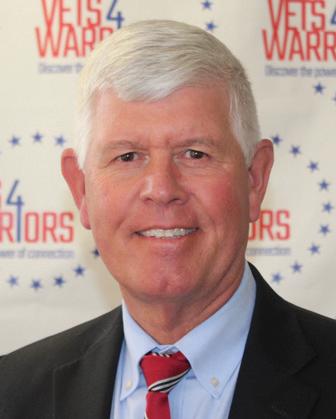
One in five adults in the U.S. (nearly 53 million people) lives with a mental illness. Yet, it still is not widely acknowledged as “real” sickness. “We’ve made some progress in changing that perception,” says Maj. Gen. Graham, “but we’re going to have the stigma until we make mental healthcare part of healthcare. Mental health is health.”
One of the goals of the NJ Hopeline, which launched a decade ago, is to make it easier for people contemplating suicide to seek help without fear of judgment. All NJ Hopeline employees have extensive training and are well

According to the National Institute of Mental Health, signs that a person may be thinking about suicide include:
Talking about:
• Wanting to die
• Great guilt or shame
• Being a burden to others
Feeling:
• Empty, hopeless, trapped or having no reason to live
• Extremely sad, anxious, agitated or full of rage
• Unbearable emotional or physical pain
Changing behavior:
• Making a plan or researching ways to die
• Withdrawing from friends, saying goodbye, giving away important items or making a will
• Taking dangerous risks such as driving extremely fast
• Displaying extreme mood swings
• Eating or sleeping more or less
• Using drugs or alcohol more often
prepared to help callers. “During a crisis, quick access to support and care can prevent death by suicide,” says NJ Hopeline Program Director William Zimmerman. “We listen, support and assess people for needs. There’s no time limit for a call, and we’re available 24/7. If we can keep that person engaged and supported, the suicidal action may never happen,” he says. Maj. Gen. Graham agrees. “The last thing we want to do is make a person regret that they called,” he says. “We want people to feel better, to know that there’s hope and help and that they’re not alone.”
If you or someone you know is experiencing warning signs of suicide, get help
Call 988 or NJ Hopeline at 855.654.6735 . For more information, visit
.
immediately.
rwjbh.org/behavioralhealth
A
ARMY MAJOR
AND HIS STAFF HELP PREVENT SUICIDE—ONE CALL AT A TIME.
RETIRED U.S.
GENERAL
MAJ. GEN. (RETIRED) MARK A. GRAHAM
RWJBarnabas Health | RWJBH.ORG 9
THE GREAT DEBATE:
CARDIO VS. STRENGTH TRAINING
Everyone knows that exercise is good for the heart. But what kind of exercise is most beneficial for optimum heart health—cardio or strength training? Anthony Altobelli III, MD, Clinical Chief of Cardiology, Robert Wood Johnson University Hospital (RWJUH) and RWJBarnabas Health (RWJBH) Medical Group, sheds some light on this decades-old debate.

When it comes to cardio vs. strength training for heart health, is one more beneficial than the other?
The scientific evidence is still building around which form of exercise is best to prevent chronic disease. Historically, aerobic (or cardio) exercise was always recommended for heart and lung health with little attention paid to strength (or resistance) training. What’s clear now, however, is that strength training is as important to heart health as aerobic exercise and that a combination of both yields the best heart outcomes with regard to blood pressure, body composition,
fitness, strength and metabolism. In turn, beneficial change in a person’s physiology yields a lower risk of diabetes, hyperlipidemia (high cholesterol), heart attack and stroke.
What’s the best way to combine these exercises?
Physical Activity Guidelines for Americans , a 2018 report from the Department of Health and Human Services, recommends that each week, adults aged 18 to 64 do at least 150 to 300 minutes of moderate-intensity aerobic activity, 75 to 150 minutes of vigorous-intensity aerobic activity or an equivalent combination of both. Strength training should be performed at least twice a week on nonconsecutive days to allow a period of rest for the muscle groups being stressed.
How does age affect the type of exercise(s) a person should do?
As we age, safety becomes an issue. The aging adult should do both forms of exercise, but participation should take into account chronic medical conditions,
such as musculoskeletal disorders, that may place the individual at risk for injury. For people at risk for falls or with balance issues, resistance exercises, such as chair squats, heel lifts, rowing, resistance bands, bicep curls and shoulder presses, may be effectively and safely performed. Research continues to support strength/resistance training for older individuals.
What advice do you have for the average person who wants to start an exercise regimen to improve their heart health?
Recommendations are based on age and whether the individual is new to an exercise program. First, choose exercise that you may find enjoyable.
Second, set realistic expectations for how often and how long you’ll exercise. Third, choose exercises that you can safely perform.
Fourth, consider partnering with others for motivation and socialization. Fifth, communicate with your physicians.
ANTHONY ALTOBELLI III, MD
Whoever your heart beats for, our hearts beat for you. To connect with a top cardiovascular specialist at RWJBarnabas Health, call 888.724.7123 or visit www.rwjbh.org/heart. FIND OUT WHICH ONE IS BEST FOR YOUR HEART
HEALTH.
Healthy Together | 10 | Winter 2023
WORLD-CLASS CARE FOR BLOOD CANCERS CLOSE TO HOME
The Hematologic Malignancies Program at Rutgers Cancer Institute of New Jersey and RWJBarnabas Health is known in New Jersey and beyond for its world-class multidisciplinary team of cancer experts and for its coveted place at the forefront of cancer research. As the state’s only National Cancer Institute-Designated Comprehensive Cancer Center, it offers patients access to the most advanced treatment options for blood cancers, including blood and marrow transplantation, CAR T-cell therapy, immunotherapies and innovative clinical trials, many not available elsewhere.
Now, the highly regarded program
has extended its reach—and its potential—with the addition of two nationally recognized leaders in the field of hematologic malignancies to lead and complement the already outstanding team in place.

As the new Chief of Blood Disorders, Matthew Matasar, MD, MS, brings extensive expertise to the program and is among the nation’s most experienced clinicians and researchers in routine, rare and complex hematologic malignancies, with extensive expertise in treating these types of cancers with clinical trials, immunotherapy and other cellular therapies. Dr. Matasar will lead the enhancement of multidisciplinary clinical services, including programmatic growth of the bone marrow transplant and cellular therapy programs across the health system.
“My goal is to grow what already is an amazing program with extraordinary physicians,” says Dr. Matasar. “My vision is to continue to develop the health system’s ability to give best-in-class care; to deliver the most promising novel

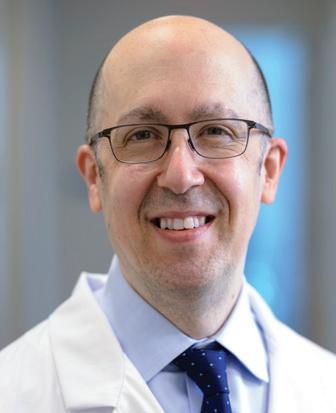
therapies in the context of ongoing and new clinical trials; to educate our patients, their families and the community; and to train physicians how best to take care of these patients.”
Ira Braunschweig, MD, Chief of Transplant and Cell Therapy, is an expert at treating blood cancers with blood and marrow transplantation as well as with CAR T-cell therapy, in which, he says, “We take the cells of a patient’s own immune system and reengineer them to become super-powerful cancerfighting cells.” Dr. Braunschweig was one of the physician-scientists leading the pivotal study in late 2015 that established CAR T-cell therapy as a standard for relapsed and refractory aggressive lymphoma.
“The Rutgers Cancer Institute/ RWJBarnabas Health program has a strong foundation,” he says. “I want to take it to the next level by expanding it and ensuring that more patients have these therapies available to them close to home, and by further enhancing the availability of cutting-edge therapies.”
To learn more about the Hematologic Malignancies Program at
Rutgers Cancer Institute of New Jersey/RWJBarnabas Health,
please visit www.rwjbh.org/beatcancer
MATTHEW MATASAR, MD, MS
CANCER DOCTORS ARE HELPING TO ENHANCE AND EXPAND THE HEMATOLOGIC MALIGNANCIES PROGRAM AT RUTGERS CANCER INSTITUTE
NEW JERSEY
HEALTH.
RENOWNED
OF
AND RWJBARNABAS
RWJBarnabas Health RWJBH.ORG | 11
IRA BRAUNSCHWEIG, MD
BETTER WOMEN’S HEALTH AT EVERY AGE
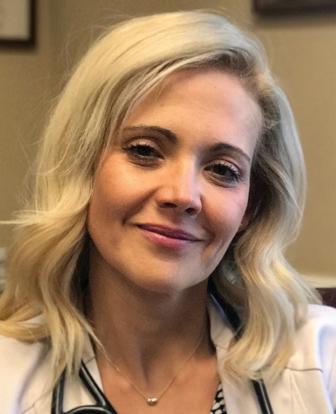

Throughout a woman’s life, her body and her healthcare needs evolve. From adolescence through menopause and beyond, women experience many changes. Staying healthy through all those changes can be daunting—but it doesn’t have to be. We asked doctors at RWJBarnabas Health to share some of their best advice on how women can maintain optimal

WHAT WOMEN NEED TO KNOW TO STAY WELL— FROM ADOLESCENCE TO AGELESS.
health at every age and stage.
PREVENTIVE AND GENERAL HEALTHCARE
Being proactive about preventing illness and injury should start early in a woman’s life. “Adolescent women should be encouraged to establish healthy eating and sleeping habits, exercise regularly and avoid excessive screen time,” says
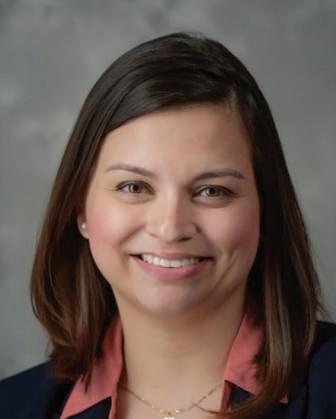
Robert A. Graebe, MD, Chair and Program Director of the Department of Obstetrics and Gynecology at Monmouth Medical Center. Preventive care, he says, can include taking seemingly simple but important measures such as consistently using sunblock and always wearing a seat belt.
Dr. Graebe also stresses the importance of caring for mental health and says that adolescent and young women should be encouraged to seek support for feelings of anxiety and depression or other mental health problems. In addition, women should schedule an annual well-woman visit. “During this visit, the care you receive will focus on you, your body and your reproductive health,” says Dr. Graebe. “A well-woman visit also provides a time
 ROBERT A. GRAEBE, MD
LENA L. MERJANIAN, MD
NICOLE M. MONTERO LOPEZ, MD
ROBERT A. GRAEBE, MD
LENA L. MERJANIAN, MD
NICOLE M. MONTERO LOPEZ, MD
Healthy Together | 12 | Winter 2023
JULIE MASTER, DO, FACC
to discuss fertility questions and family planning options and to get screened for sexually transmitted diseases.”
GYNECOLOGIC AND REPRODUCTIVE HEALTH
• First OB/GYN Visits
“The American College of Obstetricians and Gynecologists recommends that a girl establish care with a gynecologist between the ages of 13 and 15,” says Lena L. Merjanian, MD, an obstetrician and gynecologist at Rutgers Health. “This visit is an opportunity for her to establish a trusting rapport with her physician. It’s a confidential visit to discuss reproductive health concerns, contraception, relationships, adolescent sexuality and avoiding risky behaviors.”
According to Dr. Graebe, the first OB/ GYN visit is also an opportunity to establish the diagnosis of common problems such as polycystic ovarian syndrome, hypothyroidism, eating disorders, etc. “The majority of bone formation occurs during the early years, so discussion concerning proper bone health is vital to prevent future osteoporosis,” says Dr. Graebe. A first gynecologic visit usually doesn’t include a pelvic exam or Pap smear.
• Reproductive Years
During a woman’s reproductive years, maintaining optimal health can increase her chances of a healthy pregnancy and birth if she chooses to start or grow a family. Folic acid supplementation is important, especially when planning a pregnancy. In addition, women should be proactive with age-appropriate screenings, such as Pap and HPV (human papillomavirus) tests. They should use condoms with new sexual partners to prevent sexually transmitted diseases, such as chlamydia and gonorrhea, which can negatively impact fertility. And, says Dr. Graebe, they should be aware that “a woman’s peak fertile years are from about age 27 to 29, with a steady decline starting in the mid-30s.”
Some women, including those receiving cancer therapies and those wishing to postpone pregnancy until beyond their mid-30s, may want to consider egg freezing and subsequent
HEALTH EQUITY
The importance of women’s health equity cannot be understated. According to Meika Neblett, MD, MS, Chief Medical Officer at Community Medical Center, “Women’s health equity requires an integrated approach that recognizes the need for progress in understanding the social determinants of health, diversity and inclusion, and their intersectionality.
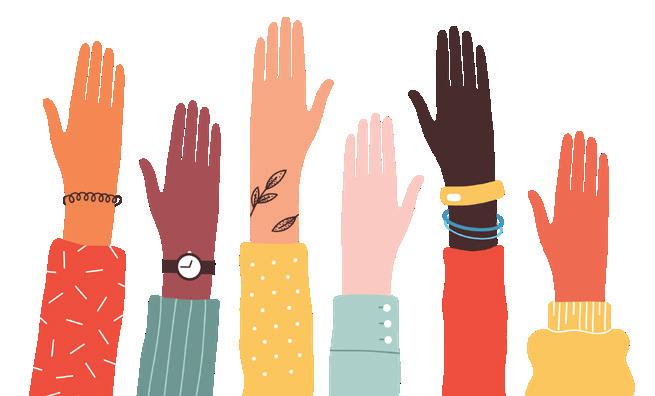

MEIKA NEBLETT, MD, MS
“RWJBarnabas Health has made equity a priority in women’s health,” says Dr. Neblett, “and it has taken steps toward removing barriers to preventive screenings that lead to earlier diagnosis and treatment of certain types of cancers as well as improving access to family planning services.”
in-vitro fertilization, says Dr. Graebe.
• Breast Health
Breast self-awareness should start at about age 20, when women should focus on knowing what’s normal for their breasts. If changes are noticed, women should talk to their primary care provider or OB/GYN. Regular breast screening can help detect cancer at an early and more treatable stage. For women at average risk for breast cancer, a clinical breast exam is recommended every one to three years between the ages of 25 and 39, and a mammogram is recommended every one to two years beginning at age 40. “It’s important for women to be aware of their family history,” says Dr. Graebe. “Women at increased risk, such as those with a family history of breast cancer and other hereditary cancer syndromes, may benefit from seeing a genetic counselor.”
HEART HEALTH
“It’s important for a woman to know her risk factors for heart disease, including her cholesterol numbers, blood pressure, family history and smoking status,” says Julie Master, DO, FACC, Director of Noninvasive Cardiac Services at Monmouth Medical Center. “There are also novel risk factors such as pregnancy complications that can put a woman at
higher risk of heart disease in the future. A history of cancer treatment may also increase her risk. Having a yearly physical and not ignoring symptoms are of the utmost importance.”
BONE HEALTH
Most women don’t think about their bones until there’s a problem with them, but bones need care to stay healthy just like the rest of the body.
Bone density testing is one way to measure bone health. This is especially important for women because, according to Nicole M. Montero Lopez, MD, an orthopedist at Clara Maass Medical Center, hormonal changes during menopause can directly affect bone density. Women 65 and older and women under 65 with risk factors, such as a family history of the disease or fracture, should have a bone density test. Frequency of testing depends on age, results of prior tests and individual risk of fracture. The goal in osteoporosis prevention is to slow down the loss of bone mass to reduce the risk of fractures. You can strengthen your bones with certain exercises and lifestyle changes. Weight-bearing exercise is the most important type of exercise for preventing osteoporosis, and a diet rich in calcium and vitamin D is good for bone health.
To learn more about women’s health services at RWJBarnabas Health, visit www.rwjbh.org/treatment-care/womens-health
RWJBarnabas Health RWJBH.ORG | 13
CHILDREN’S CARE CLOSE TO HOME
WHERE TO TURN FOR SPECIALIZED OUTPATIENT SERVICES THROUGHOUT NEW JERSEY
As a leading provider of inpatient and outpatient care for children who face special health challenges from birth to age 21, Children’s Specialized Hospital, part of the RWJBarnabas Health Children’s Health Network of hospitals, partners with families to treat a wide range of developmental, physical, mental and behavioral concerns. You’ll find outpatient services close to home at these New Jersey locations.

HAMILTON
• Audiology
• Developmental and behavioral pediatrics
• Neurology
• Occupational therapy
• Physiatry
• Physical therapy
• Psychiatry
• Psychology
• Special needs primary care
BAYONNE
• Developmental and behavioral pediatrics
• Occupational therapy
• Physical therapy
• Speech and language therapy
CLIFTON
• Developmental and behavioral pediatrics
• Neurology
• Occupational therapy
• Orthopedics
• Physical therapy
• Psychology
• Speech and language therapy
EAST BRUNSWICK
• Occupational therapy specializing in upper extremity and hand therapy
• Physical therapy specializing in orthopedic and sports medicine

EATONTOWN
• Audiology
• Developmental and behavioral pediatrics
• Neurology
• Occupational therapy
• Physiatry
• Physical therapy
• Psychology
• Speech and language therapy
EGG HARBOR TOWNSHIP
• Developmental and behavioral pediatrics
• Occupational therapy
• Physiatry
• Physical therapy
• Psychiatry
• Psychology
• Speech and language therapy
• Speech and language therapy
NEWARK
• Developmental and behavioral pediatrics
• Occupational therapy
• Physical therapy
• Speech and language therapy
NEW BRUNSWICK— PLUM STREET
• Developmental and behavioral pediatrics
• Neurology
• Neuropsychology
• Occupational therapy
• Physiatry
• Physical therapy
• Psychiatry
• Psychology
• Speech and language therapy
TOMS RIVER— LAKEHURST ROAD AND STEVENS ROAD
• Audiology
• Developmental and behavioral pediatrics
• Neurology
• Nutrition
• Occupational therapy
• Physiatry
• Physical therapy
• Psychiatry
• Psychology
• Rehabilitation technology
• Speech and language therapy
UNION
• Audiology
• Developmental and behavioral pediatrics
• Neurology • Neurorehabilitation
• Occupational therapy
• Orthopedics
• Physiatry
• Physical therapy • Psychiatry • Psychology
• Special needs primary care • Speech and language therapy
SOMERSET
• CSH RUCARES Severe Behavioral Program
• Intensive Feeding Disorders Program
WEST ORANGE
• Occupational therapy
• Physical therapy
• Speech and language therapy
To learn more about outpatient programs and services or to schedule an appointment, call 888.244.5373 or visit www.rwjbh.org/cshoutpatient At Children’s Specialized Hospital, we provide world-class care for children and young adults who face special health challenges across the state of New Jersey and beyond. We treat everything from chronic illnesses and complex physical disabilities, like brain and spinal cord injuries, to a full scope of developmental, behavioral and mental health concerns. We have convenient locations throughout the state: Bayonne, Clifton, East Brunswick, Eatontown, Egg Harbor Township, Hamilton, Newark, New Brunswick, Somerset, Toms River, Union and West Orange.
Outpatient services include facilities and equipment specially designed to meet children’s needs. Healthy Together | 14 | Winter 2023
An RWJBarnabas Health facility
BEYOND BED-WETTING
A TOP PEDIATRIC UROLOGIST SHARES THE LATEST TREATMENTS FOR URINARY TRACT PROBLEMS IN CHILDREN.

Joseph Barone, MD, a nationally recognized expert in the field of pediatric urology, was recently appointed Medical Director of Pediatric Urology for the Children’s Health Network of RWJBarnabas Health (RWJBH). Dr. Barone is also Chief of the Division of Urology and Professor of Surgery at Rutgers Robert Wood Johnson Medical School. Here, Dr. Barone talks about children’s urologic conditions as well as what’s new in the field.
How has the RWJBH pediatric urology program changed recently?
We’re now a system-based program with all pediatric urologists in all RWJBH children’s hospitals working as one group. This allows us to take advantage of
synergistic opportunities for clinical access, safety, quality and diversity. With integration, patients will receive the same pediatric urology care no matter where they are in the system.
How are children’s urologic issues different from those of adults?
Children mostly have congenital problems and adults deal with problems that develop during life. Because of this, the practice of pediatric urology now has its own board certification by the American Urological Association.

What are some common urologic issues in children?
The most common is bed-wetting, affecting 10 million children in the United States each year. Other
common conditions include urinary tract infections (UTIs) and daytime accidents. There are also some common surgical conditions, such as undescended testes and hernia.
What are some serious pediatric urologic conditions that you treat? Some children born with neurological diseases, such as spina bifida, lack the nerves that control the bladder. As a result, they’re incontinent. To restore continence, we use the small intestine to make a new bladder with a procedure called bladder augmentation. Twisting, or torsion, of the testes—when a boy’s testicle twists spontaneously and cuts off its blood supply—is another serious issue that not many people know about. Sudden, severe testis pain is an emergency and parents should take their child to the emergency department if this happens.
What robotic surgical techniques are used for children?
We offer minimally invasive robotic surgery for nearly all pediatric urology conditions that historically would require an incision. The robot is controlled by the surgeon, and three or four laparoscopic ports are placed into the child’s abdomen. Robotic surgery speeds recovery and results in less pain. For older children, we offer singleport robotics. There are only a handful of centers that offer this robotic procedure.
Are there any exciting new developments in this area?
We’re working on developing a new electrical surgical tool designed for pediatric surgery. We currently use similar tools designed for adults and when working in a very tiny space, they can be cumbersome. We’ve designed the pediatric surgical tool and are in the process of making a 3D model.
To find a pediatric urologist or for more information on children’s urologic issues, visit www.rwjbh.org/childrenshealth
JOSEPH BARONE, MD
RWJBarnabas Health RWJBH.ORG | 15
BANKING ON LIFE
WHERE AND HOW TO DONATE BLOOD THIS WINTER
It’s estimated that someone in the United States needs blood every two seconds, and, since January is National Blood Donor Month, there couldn’t be a better time to donate. Blood doesn’t have a long shelf life—between five and 35 days, depending on the component—so there’s rarely, if ever, a surplus. This is especially true in winter, when donations typically slow down because of bad weather, winter holidays and seasonal illnesses like colds and flu.
“Simply put, there’s no substitute for blood,” says Sally Wells, Business Development Liaison, Robert Wood Johnson University Hospital Blood Services. “Blood cannot be manufactured. We always say that ‘it’s the blood on the shelf’ that makes it possible to treat traumatic injuries, perform surgeries, support premature babies and treat patients who are going through advanced cancer therapies, to name a few of its uses.”
While all RWJBarnabas Health facilities run blood drives several times
a year, Wells says that multiple blood drives will occur in January, noting that donor centers in New Brunswick and Somerset will be open daily. “Our message for National Blood Donor Month is ‘Donate 3 in 2023,’” she says, referring to three pints of blood.
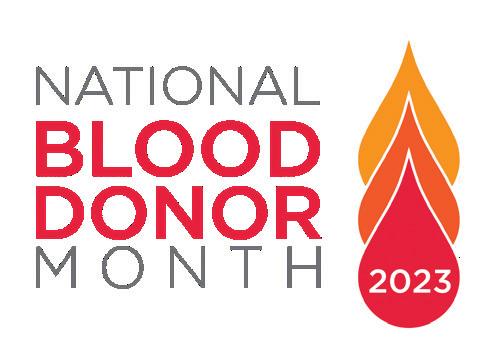
The ripple effect of the pandemic is still being felt in many areas, including blood donation. “People aren’t donating as often as before the pandemic, so we’re still experiencing periodic shortages,” says Wells. “We haven’t been able to build up a reserve, so certain blood types and products are always in high demand.”
The blood type that is most in demand is type O-negative (O-). “This is the universal blood type because it can be used in an emergency to transfuse anyone until the person’s blood type can be verified,” says Wells.

If you don’t know your type, don’t worry. When you donate, you’ll be issued a blood-donor card that will list your blood type.
HOW TO DONATE
The four basic steps to donating blood are:
1. Registration (to gather demographic information)
2. Medical interview and mini physical (to determine if the donor is suitable)
3. Phlebotomy (the actual donation, drawing blood)
4. Rest and refreshments (after blood is donated)
REQUIREMENTS FOR DONORS
To donate blood, you must:
• Be in overall good health
• Be at least 17 years old (16 with parental consent)
• Weigh at least 110 pounds (120 pounds if 16 years old)
• Present a valid photo identification with signature
For more information or to schedule an appointment to donate blood, visit www.rwjbh.org/treatment-care/blood-donation or
or call 732.235.8100 ext. 221 (New Brunswick) or 908.685.2926 (Somerset).
www.rwjuhdonorclub.org ,
Healthy Together | 16 | Winter 2023
measure the bone density at different areas of the body, including the lower spine and the hip.
Who should have bone density testing and how often?

The National Osteoporosis Foundation (NOF) recommends a DEXA scan of the hip and spine in women age 65 and older and men age 70 and older. Younger postmenopausal women or women in menopausal transition as well as men age 50 to 69 with increased risk factors should also schedule a bone density scan.

Why are women more susceptible to osteoporosis?
HEALTHY BONES
If there’s any part of our bodies that most of us take for granted, it’s our bones. Unless we have an injury, we don’t think about them much. But like our muscles and organs, our bones need care to stay healthy. Maintaining healthy bone mass is one way to do that. Nicole M. Montero Lopez, MD, an orthopedist at Clara Maass Medical Center (CMMC) who specializes in hand and upper extremity surgery, offers some tips on how to keep your bones healthy and prevent injury.
What is bone density?
Bone density is a description of how much mineral there is per unit of bone. The higher the amount of
mineralization, the more dense the bone is. There are optimal levels of mineralization where the bone will be at its strongest and at its lowest risk for fracture. Above and below this level of density is problematic for patients.
Is bone density genetically predetermined, and is there anything that can increase it?
While there is a genetic component that contributes to bone density, there are factors that can affect it on an individual level. Moderate weight-bearing exercise can help increase bone density in patients who’ve lost some mineralization from illness, age-related changes or disuse.
How is bone density tested?
Bone density is measured with a DEXA (dual-energy X-ray absorptiometry) scan, a noninvasive scan that uses X-rays to
Hormonal changes during menopause can directly affect bone density, and, because this change is specific to women, there is a slightly higher probability of seeing osteoporosis, a disease that weakens bones and causes them to become brittle, in women. Women and those undergoing menopause are often affected the most.
Is osteoporosis preventable, treatable or reversible?
While it’s not entirely preventable, it can be treated in a number of ways, including by eating a well-balanced diet, maintaining a healthy weight and doing light weight-bearing exercise, which can be as simple as standing up from a chair and sitting back down in a controlled manner. This is enough to provide some benefit to the bones in terms of increasing bone density. There are also medications, from simple vitamins and supplements to medications infused in a doctor’s office, that can help prevent, treat and potentially reverse some levels of osteoporosis.
Does cold weather affect bones?
No, but people should take extra precautions in snowy or icy conditions to avoid falling. Obviously, slippery surfaces make us more prone to slips and falls, so wear footwear with slip-resistant soles.
To learn more about orthopedic services at Clara Maass Medical Center, visit www.rwjbh.org/ortho or call 973.450.2000 For additional information about bone density testing, visit www.rwjbh.org/treatment-care/radiology-and-diagnostic-imaging/bone-density-test.
NICOLE M. MONTERO LOPEZ, MD
HOW TO GET THEM, HOW TO KEEP THEM Clara Maass Medical Center | RWJBH.ORG/CLARAMAASS | 17
As winter approaches, most of us look forward to nesting, nurturing indoor hobbies and enjoying festive holiday celebrations. For many, though, shorter days and longer nights can trigger a form of depression that’s often misunderstood and, if left untreated, can be debilitating.

Seasonal Affective Disorder, also known as
SAD, is more than just a bout of “winter blues.” It’s a type of depression that occurs during seasonal transitions, most commonly when we shift from fall to winter. It’s estimated that millions of American adults suffer from SAD, and many may not even realize it. According to the American Psychiatric Association, about 5 percent of adults in the U.S. experience SAD, and symptoms can last about 40 percent of the year.
How can you know whether a seasonal mood shift is something more serious? To help shed light on SAD, we reached out to Mena Mirhom, MD,

SEASONAL AFFECTIVE DISORDER (SAD) WINTER BLUES—OR SOMETHING MORE? UNDERSTANDING Healthy Together 18 | Winter 2023
MENA MIRHOM, MD, FAPA
WHEN TO GET HELP
As with most mental health struggles, a good first question is, “Has this been getting in the way of my function?” If you’re still unsure, Dr. Mirhom says the four D’s can help people recognize when it’s time to seek professional support:

• DURATION: Are symptoms lasting for more than two weeks?
• DEPTH: If I rate my mood from 1 to 10, 1 being the lowest, do I often feel closer to 1?
• DAILY: Am I experiencing these feelings consistently and frequently?
• DUTY: Are these feelings making it harder for me to work or function?
major depressive disorder (MDD), SAD symptoms usually subside during the spring and summer.
What are the most common symptoms of SAD?
Symptoms include losing interest in things you typically enjoy, feeling down or sad most days, sleeping too much, overeating, weight gain and, in some cases, thoughts of self-harm or suicide. Unlike other forms of depression, SAD is diagnosed when depressive episodes occur during specific seasons for at least two consecutive years.
What causes SAD?
What is SAD?
SAD is a subtype of depression that has a seasonal pattern. It typically occurs around the end of fall or the start of winter, especially in geographical locations such as the Northeast. Unlike
While the exact cause is unknown, several theories point to genetics and neurotransmitters like serotonin, a brain chemical that helps regulate mood. Some studies suggest that people with SAD have a higher level of a certain transporter called SERT, which decreases their serotonin levels in winter. There is also evidence that people with SAD produce too much melatonin, the hormone the body releases in response to darkness to facilitate sleep.
Who’s most at risk for SAD?
Women are more likely than men to suffer from SAD, which generally
begins in young adulthood. It’s also more common in people with MDD or bipolar disorder and other mental disorders like Attention Deficit Hyperactivity Disorder (ADHD) or anxiety disorders. SAD is more common in those living farther north, where there are shorter daylight hours in the winter.
Is this condition physiological, psychological or both?
While there are physiological components related to serotonin and melatonin, there is also a psychological component where many of our coping mechanisms or connections can be restricted during winter. Social isolation, lack of movement and connection with the community play a role in SAD as in MDD.
How is SAD treated, and how well does treatment work?
The primary treatment for SAD is light therapy, which works by safely simulating sunlight. Patients sit in front of a very bright (10,000 lux) light for about 30 minutes daily. (Light-therapy lamps are widely available online and range in price from about $30 to $1,500 or more.) Biologically, this therapy inhibits melatonin, the hormone that contributes to oversleeping and an overall sluggish feeling. Other treatment options include psychotherapy, antidepressant medications and vitamin D, which can be used alone or in combination with light therapy.
What is the biggest misconception about SAD?
The biggest misconception about SAD is that it is something we must endure and that there’s nothing we can do about it. There are painful experiences in life that are unavoidable, but this condition is preventable and treatable. Recognizing this pattern and getting ahead of it can save patients a lot of grief.
call
call 800.300.0628
FAPA, Medical Director of Behavioral Health Services at Clara Maass Medical Center (CMMC).
To connect to the Department of Behavioral Health at Clara
973.844.4357 ; to reach the RWJBH Behavioral Health Access Center,
Maass Medical Center,
Clara Maass Medical Center | RWJBH.ORG/CLARAMAASS | 19
WHY YOU SHOULD HAVE A BIRTH PLAN
PLANNING AHEAD CAN HELP REDUCE STRESS AND ALLOW YOU TO RELAX AS YOUR DUE DATE DRAWS NEAR.

Healthy Together 20 | Winter 2023
Pregnant women are faced with many decisions. How and where will they give birth? Will they opt for a scheduled C-section? Should they take childbirth classes? Will they breastfeed? Who, if anyone, would they like in the delivery room with them? Will their child be delivered by an OB/GYN or a midwife? These are just some of the decisions moms-to-be need to make, with or without the input of a partner.
This is where a birth plan can come in handy. Expectant parents are no longer willing to leave anything to chance and prefer to have their plans documented in advance. This helps ensure that the mother’s wishes are known and carried out, when possible, and that things go as smoothly as possible before, during and after childbirth.
DO’S AND DON’TS OF DRAFTING A BIRTH PLAN
A birth plan is a document prepared by or for an expectant mom that details her wishes for her care and her baby’s from pregnancy through delivery and sometimes even until after the baby is born. “It can be a very helpful tool,” says Michael Straker, MD, Chairman of Obstetrics and Gynecology at Clara Maass Medical Center. “For me, a birth plan is very useful in that when labor or the day of delivery comes, I know what a woman’s hopes and wishes are.” And, he adds, preparing a birth plan means there won’t be things a woman forgets when she’s in the throes of labor or regrets afterward.
Dr. Straker recommends that women discuss their medical wishes with their providers before drafting a birth plan to ensure that their plan isn’t so restrictive that it can hinder their care. “A birth plan can be an opportunity for the doctor and patient to discuss how an induction of labor should be brought about, or what the options are for the second stage of labor,” he says.

SHOULD YOU CHOOSE A MIDWIFE? YOU HAVE THAT OPTION AT CMMC.
When it comes to pregnancy and childbirth, women have more choices today than ever in terms of how their pregnancies are managed and where and how they give birth. While the use of midwives to help manage pregnancies and assist in deliveries is certainly not new, more women are choosing to use midwives than in the past, and the option has gained widespread mainstream acceptance in recent years.
Clara Maass Medical Center (CMMC) began employing midwives in 2020, and their presence has been a boon for the hospital’s obstetricians and patients. “They’re a welcome addition,” says Dr. Straker.
The midwives at CMMC hold a certified nurse midwife (CNM) degree, which is a master’s degree or higher. They’re trained to manage low-risk pregnancies and deliveries on their own, while obstetricians can attend to high-risk patients, surgical deliveries and other medical care. “We’re able to offer slightly more individualized care,” says Angela Dickson-McDowell, CNM.
“The midwife model is designed to let the body do what the body is supposed to do,” says Suzette Gray, CNM, another full-time midwife at CMMC. “Midwives give women a lot of support if they want a natural birth, and they spend time explaining the process.” Gray explains that midwives can spend more time with patients to give labor a chance to progress naturally. They can help position the mother and baby for delivery, help with breathing exercises and allow women more freedom to move around. That approach, she says, can lead to more vaginal deliveries.
“That leads to more informed consent and more collaborative decision making.”
While a birth plan can help minimize stress and last-minute decision-making, Dr. Straker says that women should understand that the hospital may not always be able to provide everything in their plan. “For example, a woman might ask for water therapy, or to be able to take a hot shower while she’s in labor. But if waterproof wireless monitoring isn’t available or if staffing prevents the nursing staff from being one-on-one with the patient, as the physician, I can’t change that even though it’s requested in the birth plan,” he says.
A birth plan can include as many
details as a mother wants. She can specify things like a preferred music playlist to listen to during labor, who she’d like to be in the delivery room and who she wants to cut the baby’s umbilical cord. She can also indicate that she wants skin-to-skin contact with the baby after birth or that her baby should not receive a bottle because she wants to breastfeed exclusively.
“Everyone should understand that plans can change,” says Dr. Straker. “We may not be able to honor everything on the list depending on the situation. Make your birth plan, but trust your doctor. What we always want most is to have good outcomes for moms and babies.”
For more information about maternity services at Clara Maass Medical Center, call 973.450.2000 or visit www.rwjbh.org/maternity
Clara Maass Medical Center | RWJBH.ORG/CLARAMAASS | 21
MICHAEL STRAKER, MD
SPINAL SURGERY GOES HIGH-TECH
CLARA MAASS MEDICAL CENTER OFFERS THE LATEST VERSION OF O-ARM SURGICAL IMAGING TO INCREASE PRECISION, REDUCE PAIN AND SHORTEN RECOVERY TIMES.
Patients in need of a spinal fusion or other spinal surgery are often concerned about the long and difficult recovery that follows. But state-of-the-art technology now available at Clara Maass Medical Center (CMMC) is not only improving patient outcomes, it’s also
dramatically speeding up surgery times and recovery times with minimally invasive techniques guided by precise, real-time imaging.
O-arm surgical imaging has been available for more than a decade, but the latest versions of the portable CT scanning device, like those used at CMMC, provide highly detailed realtime images that make complex and delicate procedures more accurate and safer than ever before.
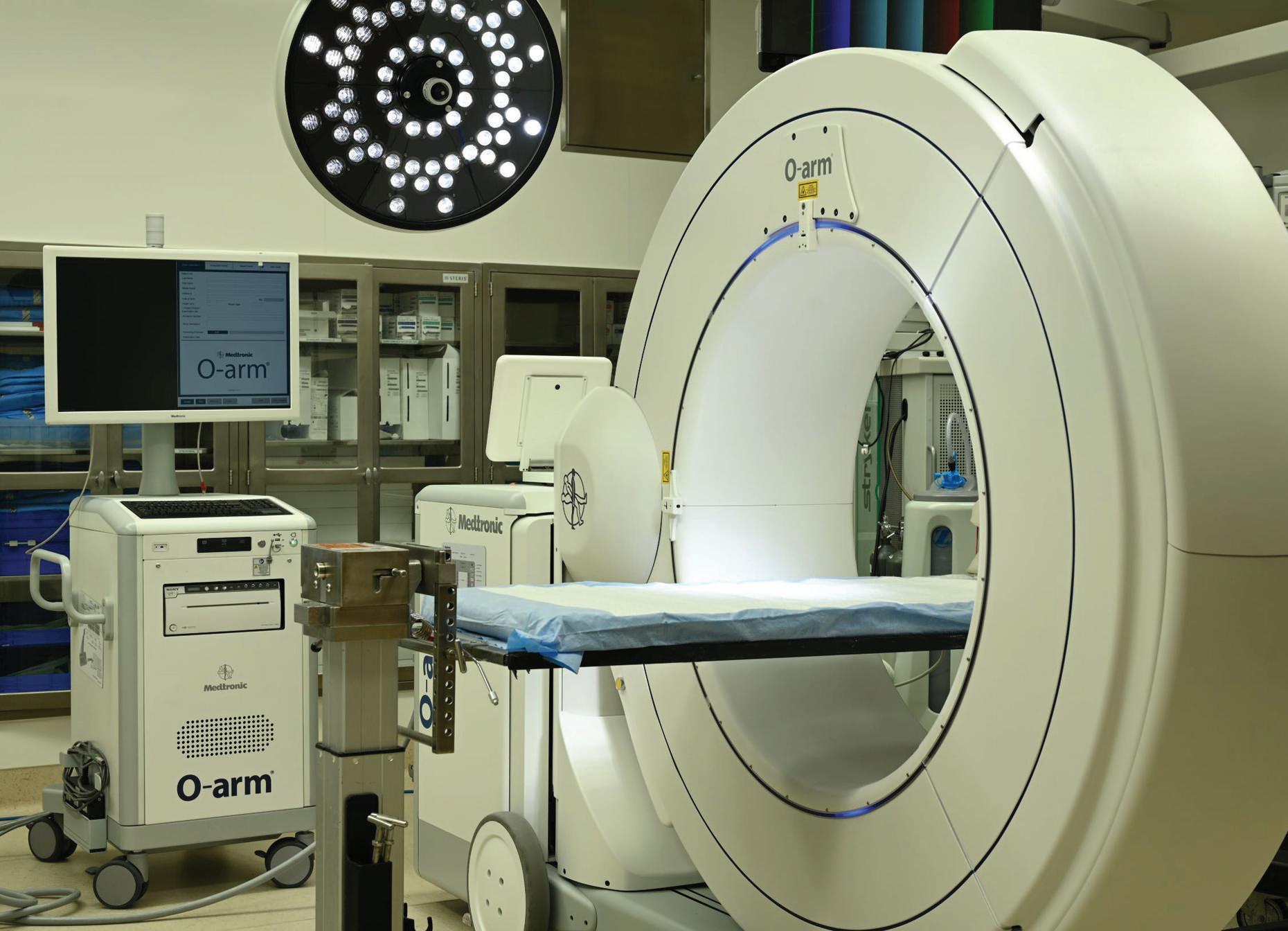
“We’re now at a point where we can
navigate so much more,” says Frank Mazzarella, MD, Chief Continuum of Care and Clinical Services Officer at CMMC. “When we put an instrument in the spine, we know exactly where we are, anatomically verified under 3D navigation.” With the new O-arm imaging, “We can now do multilevel spinal fusions with small incisions in a minimally invasive fashion,” says Dr. Mazzarella.
Using the example of a transforaminal lumbar interbody fusion (TLIF), a surgical procedure that permanently fuses bones of the spine, Dr. Mazzarella says that, in the past, a single-level fusion would take three hours to complete.
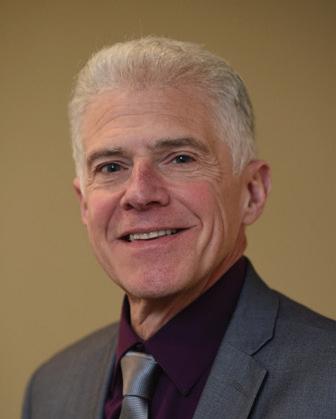
With the new O-arm technology, the surgery can be performed in an hour and a half. Because the surgery is less invasive when guided by the new O-arm, the road to recovery is easier.
As a result, patients undergoing single-level fusion can be discharged from the hospital in as little as 24 hours, or 36 hours for a multilevel fusion.
The focus for now is on spinal surgery, says Dr. Mazzarella, but the O-arm can be equipped for other uses as well, including cranial and neurological procedures including placement of electrodes for treatment of epilepsy.
The O-arm Surgical Imaging System allows surgeons to make smaller and fewer incisions and navigate delicate areas with extreme precision.
FRANK MAZZARELLA, MD
For information about minimally invasive spine surgery at Clara Maass Medical Center, visit www.rwjbh.org/treatment-care/neuroscience/neurology/treatments/back-spine or call
. Healthy Together 22 | Winter 2023
973.450.2000
HEALTHY GAME-DAY WINGS
If you search online for popular Super Bowl foods and snacks, you’ll find the usual suspects: chili, pizza, burgers and, usually topping the list, Buffalo wings. We wanted to share a recipe for a healthy alternative, but we didn’t want to be party poopers. So, we turned to Clara Maass Medical Center Registered Dietitian Silvana Blanco for something low in fat, sugar and sodium yet still fun and delicious. In keeping with game-day tradition, she came up with a healthy take on a popular option—without sacrificing crunch or kick!
CAULIFLOWER BUFFALO WINGS

INGREDIENTS:
• 1 head of cauliflower cut into florets (about 8 cups)
• 1 cup white whole wheat flour
• 1 cup water
• 1 tsp. garlic powder
INSTRUCTIONS:
• Pinch of sea salt and cayenne pepper to taste
• ½ tsp. paprika
• ½ cup of your favorite hot sauce
• 1 tbsp. butter melted
• Preheat oven to 400 degrees F and line a baking sheet with parchment paper.
• In a large bowl, combine flour, water, garlic powder, salt, cayenne pepper and paprika; whisk well to combine. Add in cauliflower and stir gently to coat the florets.
• Transfer the cauliflower to the parchment-lined baking sheet and bake for 10 minutes. Flip over and bake for another 10 minutes or until they start to get crispy.
• In a separate bowl, combine hot sauce and melted butter. Pour evenly over the cauliflower and gently toss until evenly coated.
• Put the cauliflower florets back in the oven for another 10 minutes or until the cauliflower begins to crisp up.
• Serve with a healthy ranch dip and a side of celery sticks.
To learn more about nutrition counseling at Clara Maass Medical Center, call 973.450.2000
GO BEYOND CHIPS, DIP AND CHILI THIS SUPER BOWL SUNDAY.
or visit www.rwjbh.org/claramass.
Center | RWJBH.ORG/CLARAMAASS | 23
Clara Maass Medical
The best care for your heart, and for everyone in it.



































Clara Maass Medical Center has a passion for heart health. We’ve established ourselves as a leader in patient safety and quality. Our industry-leading catheterization techniques for emergent and elective angioplasty include wrist access (when appropriate) to reduce recovery time. Leading cardiac specialists provide expert care for oncology and maternal care patients. And our nationally recognized program includes certifications in acute coronary syndrome, heart failure and cardiac rehabilitation. In partnership with Rutgers Health, it’s all part of our dedication to every heart in our community. Learn more at rwjbh.org/heart

Clara Maass Drive, Belleville, NJ 07109 NON PROFIT U.S. POSTAGE PAID Harrisburg, PA Permit #324
1




















 MARIA J. KOWZUN, MD, FACS
MARIA J. KOWZUN, MD, FACS




 TOP: Golfers at the 7th annual Clara Maass Medical Center Golf Invitational & Inaugural Tennis Open included Robert V. Gamba, Event Chairman and Chairman of the Clara Maass Medical Center Foundation Board (third from left) and George Filosa, Peter Falzo and Frank Rizzo.
Former NY Giants Super Bowl Champions Bart Oates and Shaun O’Hara hosted a sports panel at the event.
at the Clara Maass Medical Center Golf Invitational & Inaugural Tennis Open.
TOP: Golfers at the 7th annual Clara Maass Medical Center Golf Invitational & Inaugural Tennis Open included Robert V. Gamba, Event Chairman and Chairman of the Clara Maass Medical Center Foundation Board (third from left) and George Filosa, Peter Falzo and Frank Rizzo.
Former NY Giants Super Bowl Champions Bart Oates and Shaun O’Hara hosted a sports panel at the event.
at the Clara Maass Medical Center Golf Invitational & Inaugural Tennis Open.










 ROBERT A. GRAEBE, MD
LENA L. MERJANIAN, MD
NICOLE M. MONTERO LOPEZ, MD
ROBERT A. GRAEBE, MD
LENA L. MERJANIAN, MD
NICOLE M. MONTERO LOPEZ, MD




























































